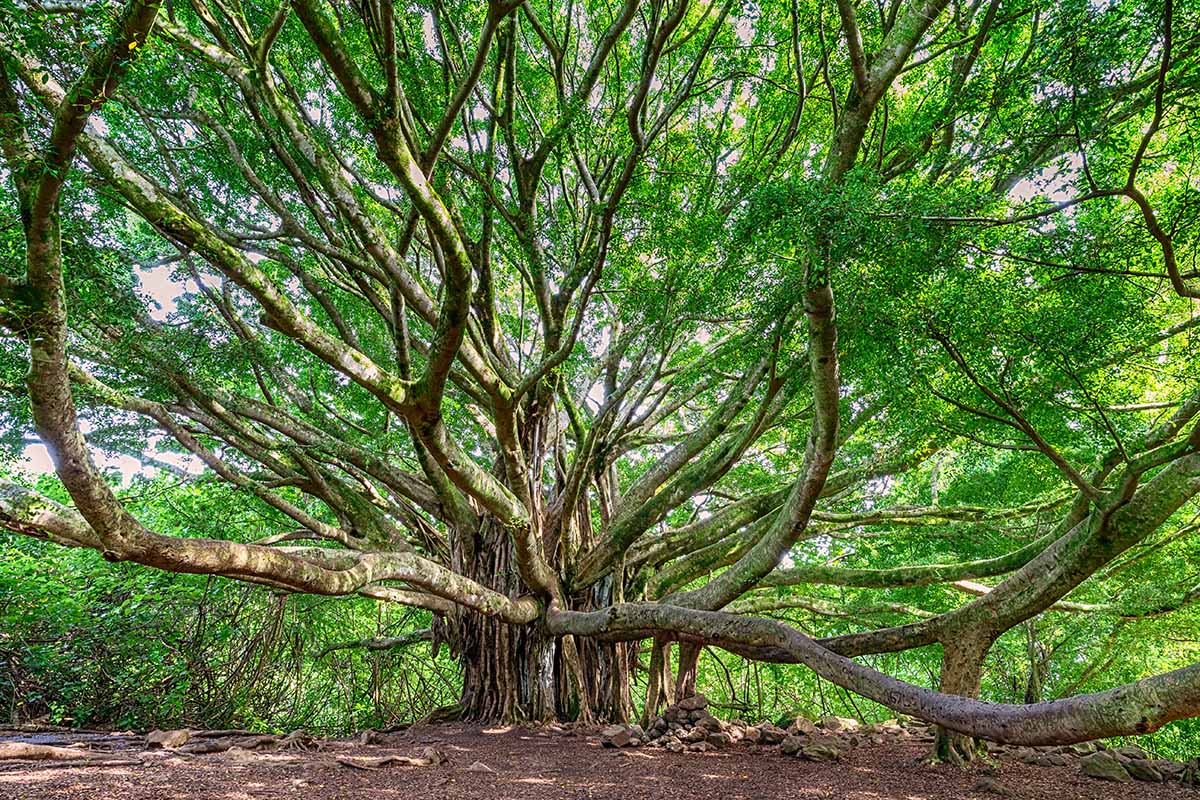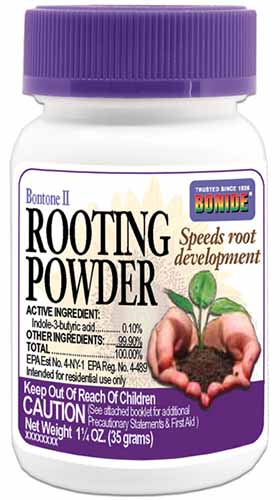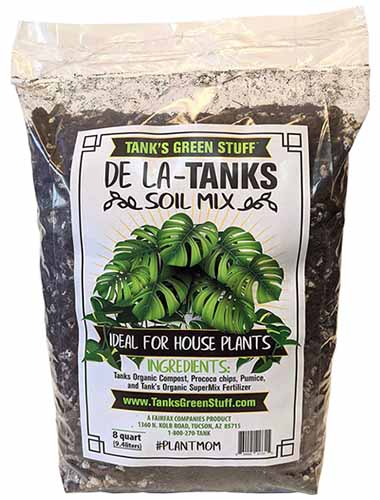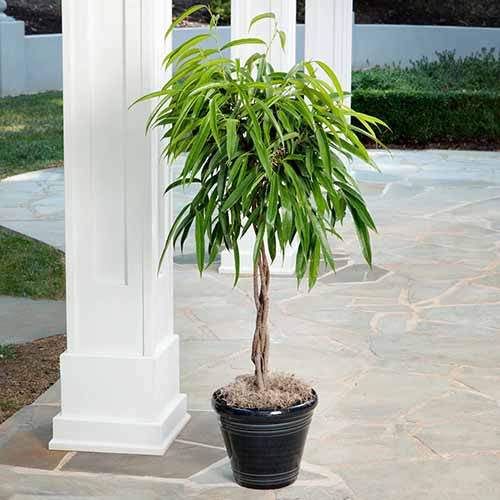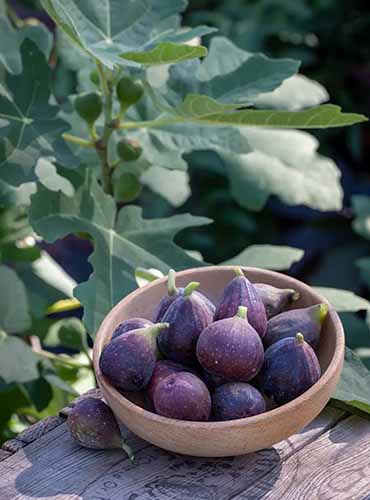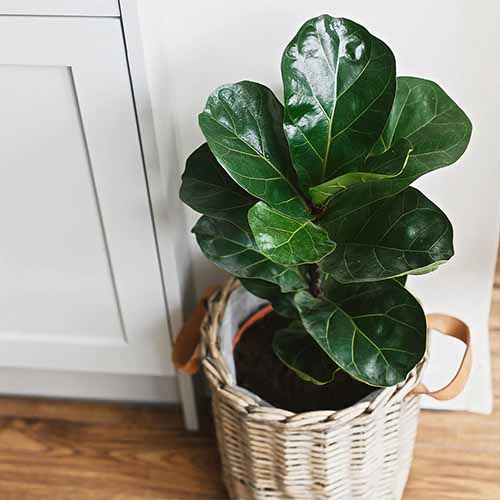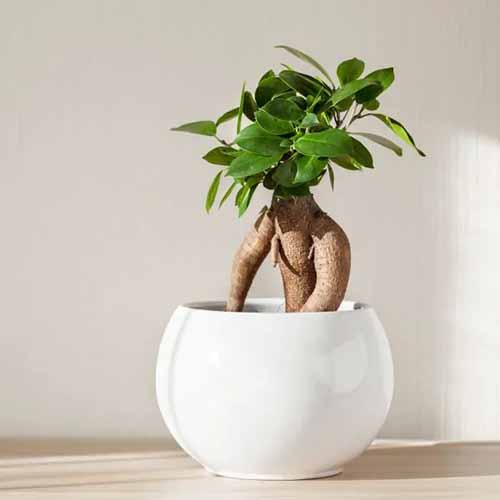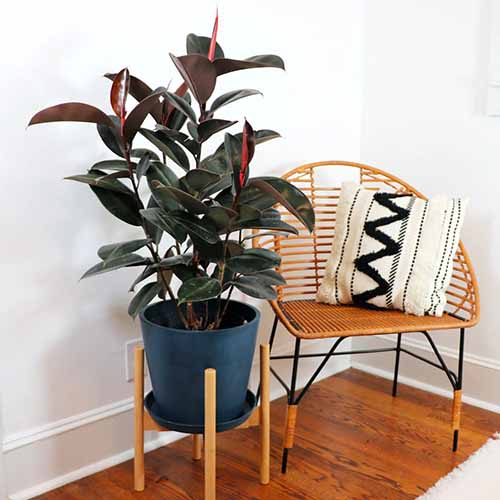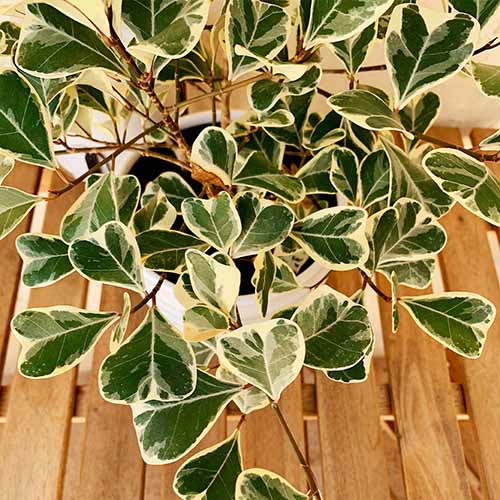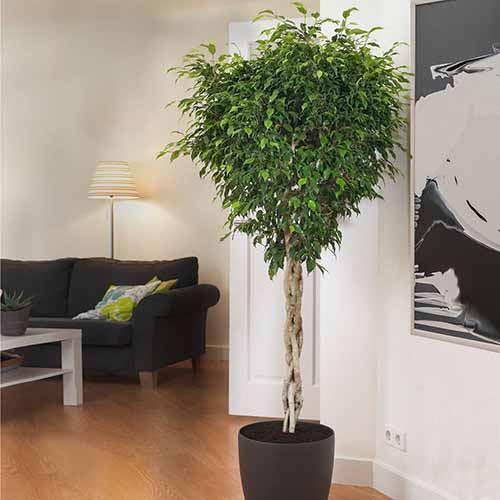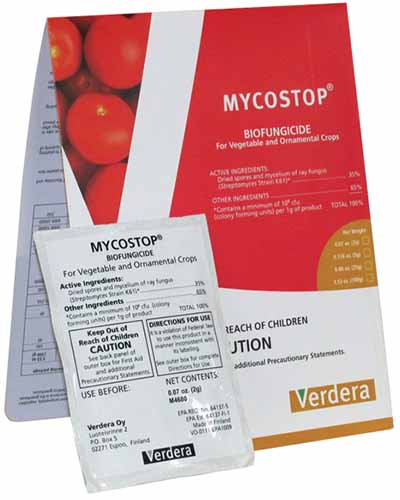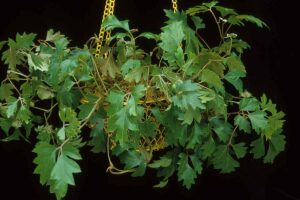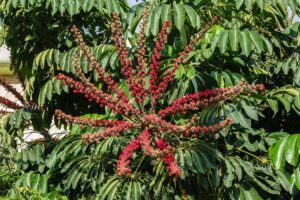Ficus spp.
The Ficus genus encompasses a plethora of beautiful and fascinating plants, from dramatic fiddle-leaf figs (F. lyrata) to the Great Banyan tree in India, a F. benghalensis specimen that spreads out to cover nearly five acres.
The species commonly grown as houseplants like rubber trees (F. elastica) and weeping figs (F. benjamina) are in the same genus as the fig trees cultivated for the miraculous fruits that make our charcuterie boards pop.
The Ficus genus is very diverse, consisting of vines, shrubs, and trees, with species that grow just a few inches tall to those that reach heights of hundreds of feet.
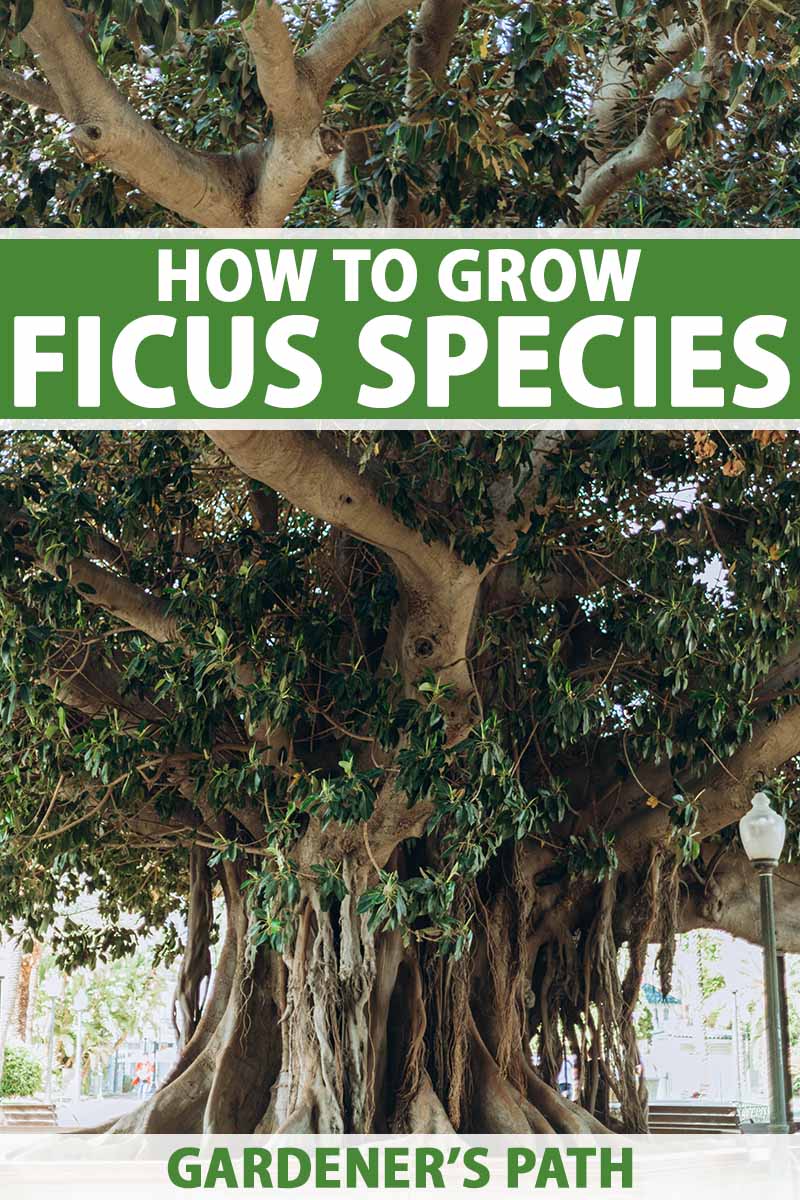
We link to vendors to help you find relevant products. If you buy from one of our links, we may earn a commission.
I’ve yet to meet a ficus I don’t like, from enjoying the fruits of my common fig (F. carica) trees to the adorable little ginseng (F. microcarpa) bonsai I keep on my desk.
In this guide, we’ll go over what the plants in this genus have in common and how to care for them, in a broad sense.
Here’s what I’ll cover:
What You’ll Learn
What Is a Ficus?
Regardless of which Ficus species you’re growing, there are lots of similarities between them. Let’s discuss exactly what a Ficus is first.
Ficus is a genus in the Moraceae family, which also includes mulberries. There are five subgenera within the genus: Ficus, Pharmacosycea, Sycidium, Sycomorus, Synoecia, and Urostigma.
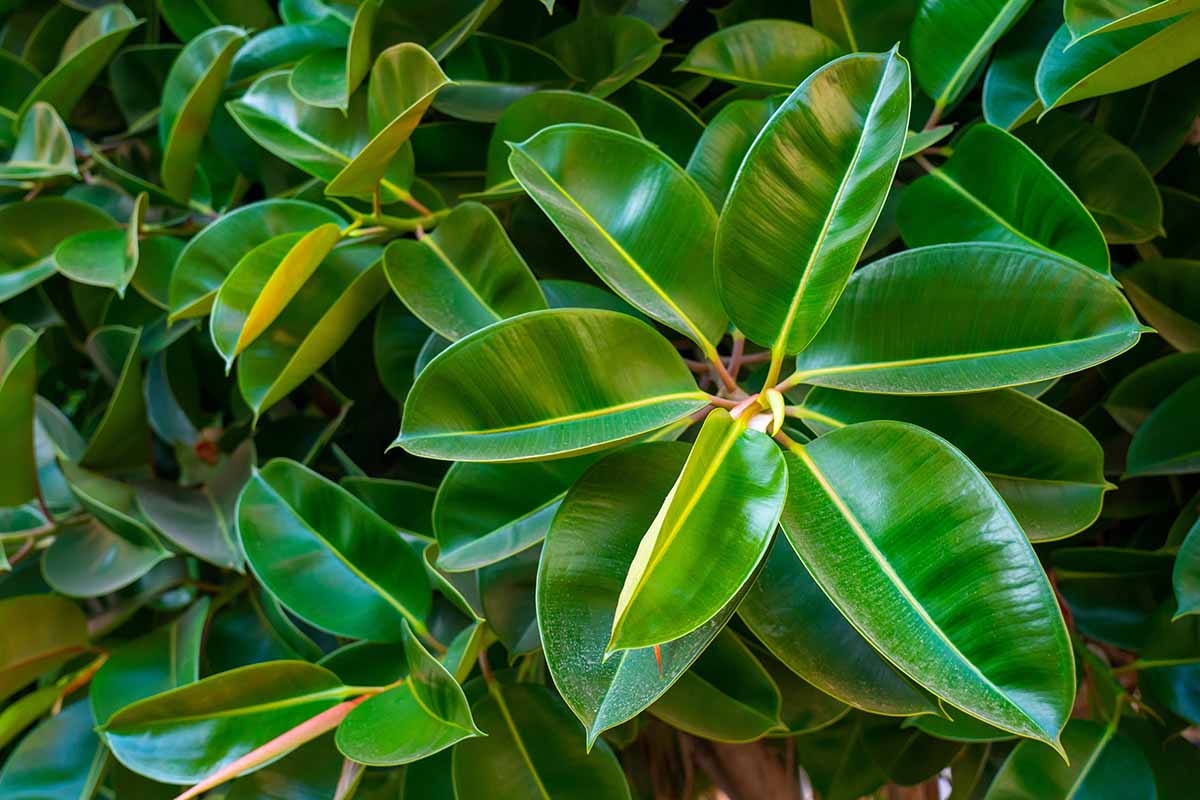
There are over 800 Ficus species, growing across the globe in tropical and warm temperate areas.
Most do best in Zones 9 to 11, though there are outliers that tolerate climates down to Zone 5 and up to Zone 12.
Almost all are evergreens and grow edible fruits, though not all of the fruit is considered palatable.
In many cases, that’s only because Westerners haven’t learned to appreciate the fruits from some of the species, while local populations in the areas where the plants grow natively enjoy them.
But even where humans don’t eat and enjoy the fruits, the wildlife sure does – bats, monkeys, and birds love them.
The unique fruits are actually what defines the Ficus genus.
If you’ve ever opened up a fig, you’ve probably noticed the unusual interior. That’s actually the inflorescence made up of hundreds of tiny flowers held inside a syconium.

Think of the fig fruit as a large swollen stem enclosing a bunch of tiny flowers.
These flowers can only be pollinated by fig wasps, which climb in the bottom of the fruit through an entrance called an ostiole. While they’re inside, the wasps pollinate the plant, lay eggs, and might even hibernate there.
All species also have a waxy latex in the stems and foliage that comes out when the plant is cut, and most have aerial roots. Many Ficus species are epiphytes, and some – such as strangler figs – kill the host tree as they mature.
With over 800 species in the genus, there is bound to be some overlap and some natural hybridization. In some areas there are over 70 species coexisting.
Cultivation and History
Some of the foliage on Ficus trees looks positively prehistoric to me, like something the dinosaurs would have eaten.
Experts estimate that the plants have been around for at least 60 million years. They’ve most likely been a part of human culture for as long as humans have existed.
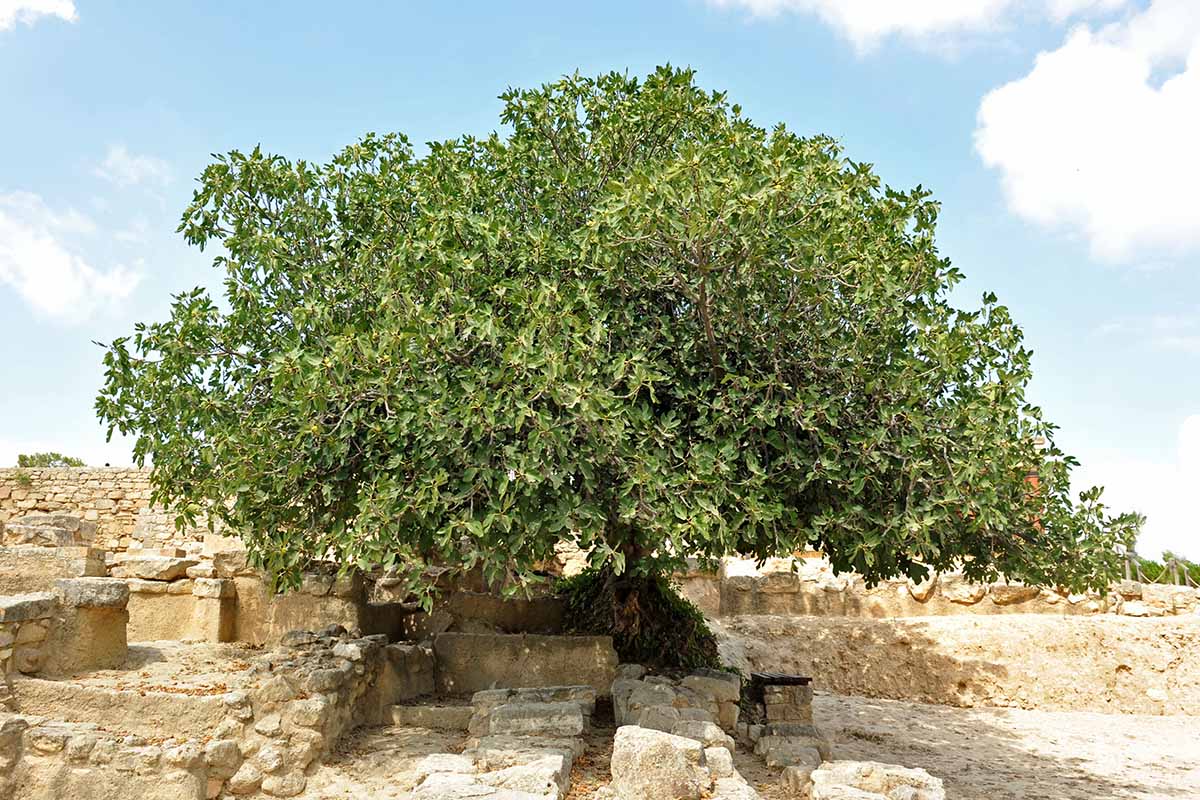
Fossils of Ficus species dating back to 9400 BCE were discovered in the Jordan Valley, and humans have been cultivating these plants at least as early as the 12th century.
Twelfth-century horticulturist Ibn al-’Awwam wrote a book about agriculture that included how to cultivate figs. By the 15th century, common figs were being grown in the British Isles.
Since then, many species have become popular as houseplants, with dozens of cultivated varieties available, and others are widely used in landscaping in warm climates across the globe.
Ficus Propagation
To propagate Ficus species, stem cuttings are a breeze and air layering works well, too. Or you can always pop over to your local nursery and find a potted plant to bring home.
From Air Layering
Air layering is so named because you propagate the new plant up in the air rather than in soil. This can be done at any time of year, but tends to work best in spring and summer.
To start, look for a sturdy branch at least as thick as your pinky. It needs to be large enough to support some moistened moss wrapped in plastic as well as the developing roots.

Cut or pull off the leaves at the center of the branch to expose a section that is between six inches and a foot long, depending on the size of the plant.
Take a sharp, clean knife and make a shallow cut around the entire circumference of the branch.
The goal is to cut through the bark and into the phloem of the stem, but you don’t want to cut into the cambium.
You should be cutting through the brown bark and exposing the green growth underneath. If you cut beyond the green and encounter the white cambium, you’ve cut too deep.
Don’t worry if this happens, just try to slow down and take your time with the rest of the cuts.
When you’ve made your first horizontal cut, make another one about three inches below that. The area needs to include at least one leaf node or aerial root node.
Then, make several vertical cuts about half an inch apart. These should connect to the top and bottom horizontal cuts you made.
Use the blade of your knife to carefully strip off the bark between the top and bottom cuts to completely expose the green layer underneath.
Use a discarded toothbrush or paint brush to put a thin layer of rooting hormone powder on the exposed section. You might want to mist the exposed area first to help the powder adhere.
Bonide Bontone II Rooting Powder
Bonide makes an excellent rooting powder, which you can buy at Arbico Organics in one-and-a-quarter-ounce containers.
It helps to have a second pair of hands for the next part, but you can do it yourself.
Grab a few handfuls of sphagnum moss and soak it in some water. Wring it out and pack it against the exposed area of the branch. You want at least an inch of moss all the way around, but two inches would be even better.
Hold the moss in place and wrap it in clear plastic wrap to secure it around the branch. Seal the top and bottom of the plastic with twine, zip-ties, string, or tape.
Now, your job is to keep the parent plant happy as you normally would while also ensuring that the moss stays moist.
If you don’t see moisture on the inside of the plastic, open it up on one end and touch the moss. If it’s feeling dry, spray it with some water.
Eventually, you’ll start to see roots developing inside the moss. This can happen quickly, depending on the time of year and the species, or it can take months.
Once the moss is filled about a third of the way with roots, it’s time to cut the new plant away from the parent.
To do this, take a clean, sharp knife or pruners and cut through the stem just below the moss pack.
Remove the plastic and moss and plant the roots in a pot filled with potting soil. Most species like to be a bit root bound and an oversized pot promotes root rot, so choose a container that is just an inch or so larger than the rootball.
Bury the stem deep enough that the plant can support itself in an upright position.
From Stem Cuttings
This method can be used with any Ficus species. In the spring, look for a pliable stem about the diameter of a pencil. Cut off a piece about six to nine inches long.
The most important consideration isn’t the exact length but to remove a section of stem with at least one leaf node or aerial root node. Use a pair of clean clippers or a knife to cut just below one of these nodes.
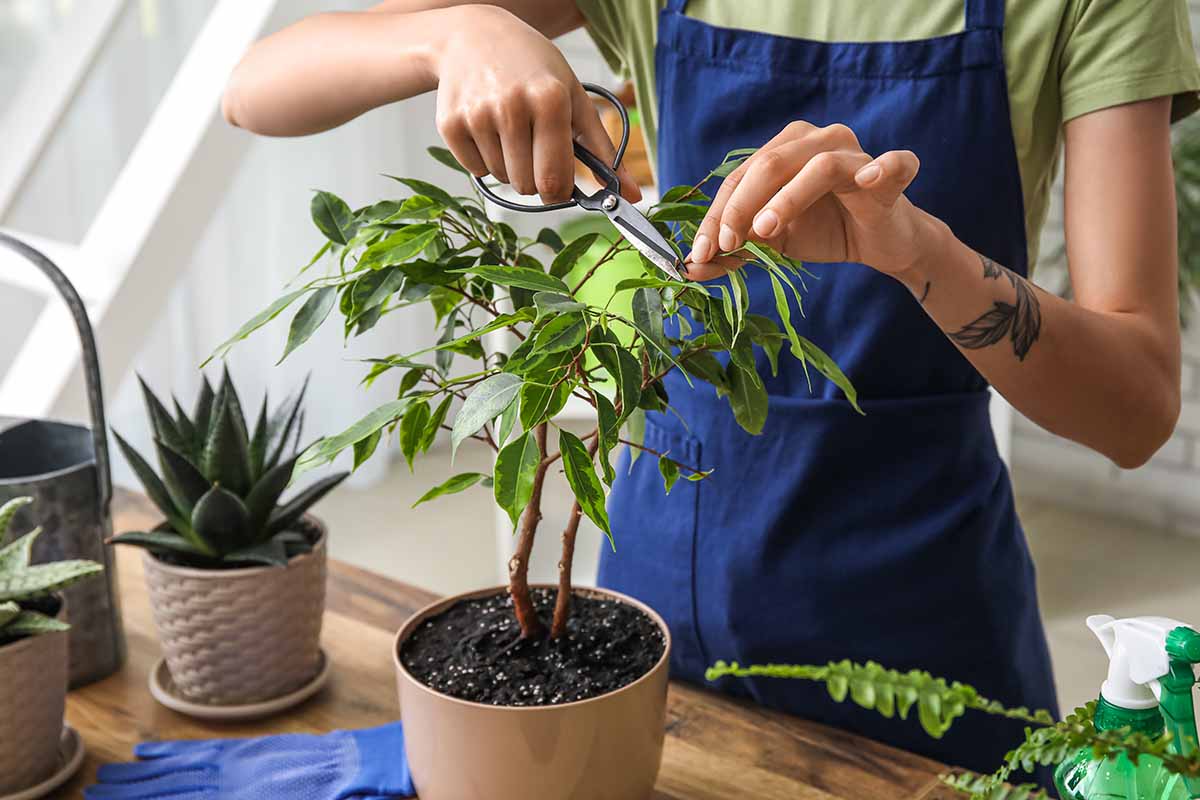
Remove all but the top one or two leaves for smaller-leaved species and all but one leaf for species with large leaves. In the case of something like a fiddle-leaf fig, you can even cut the leaf in half horizontally.
The goal is to reduce the amount of leaf tissue that the stem has to support while it’s developing roots. Too much leaf tissue will quickly drain the stem of all nutrients, while too little leaf tissue will reduce photosynthesis.
Fill a small pot with well-draining, water retentive potting medium and make a hole in the center using your finger, a pencil, or a chopstick.
You can use a growers pot for this process or use the permanent growing container so you don’t have to transplant the cutting later. The container should be around six inches in diameter.
Dip the cut end in powdered rooting hormone and insert it into the hole.
Firm the soil up around the cutting and moisten the potting medium. You’re welcome to use a cloche or a clear plastic bag over the cutting to help retain moisture – just make sure the plastic is not touching the foliage.
Keep the soil moist but not soaking wet, and keep your cutting in an area with bright, indirect light, or direct morning light.
After four weeks or so, gently insert your hand into the soil underneath the plant and lift up to look for roots. If you see them, you can transplant the cutting into its permanent location.
Transplanting
If you start a plant via cuttings or air layering, or if you buy a ficus at the store, there will come a time when you want to move it into a more permanent container.
Ensure that the container you choose has drainage holes at the bottom and is one or two inches larger than the existing pot.
Gently remove the plant from its existing container and loosen up the roots a little. If you see any roots that are mushy or black, or that are broken, snip them off with a clean pair of scissors.
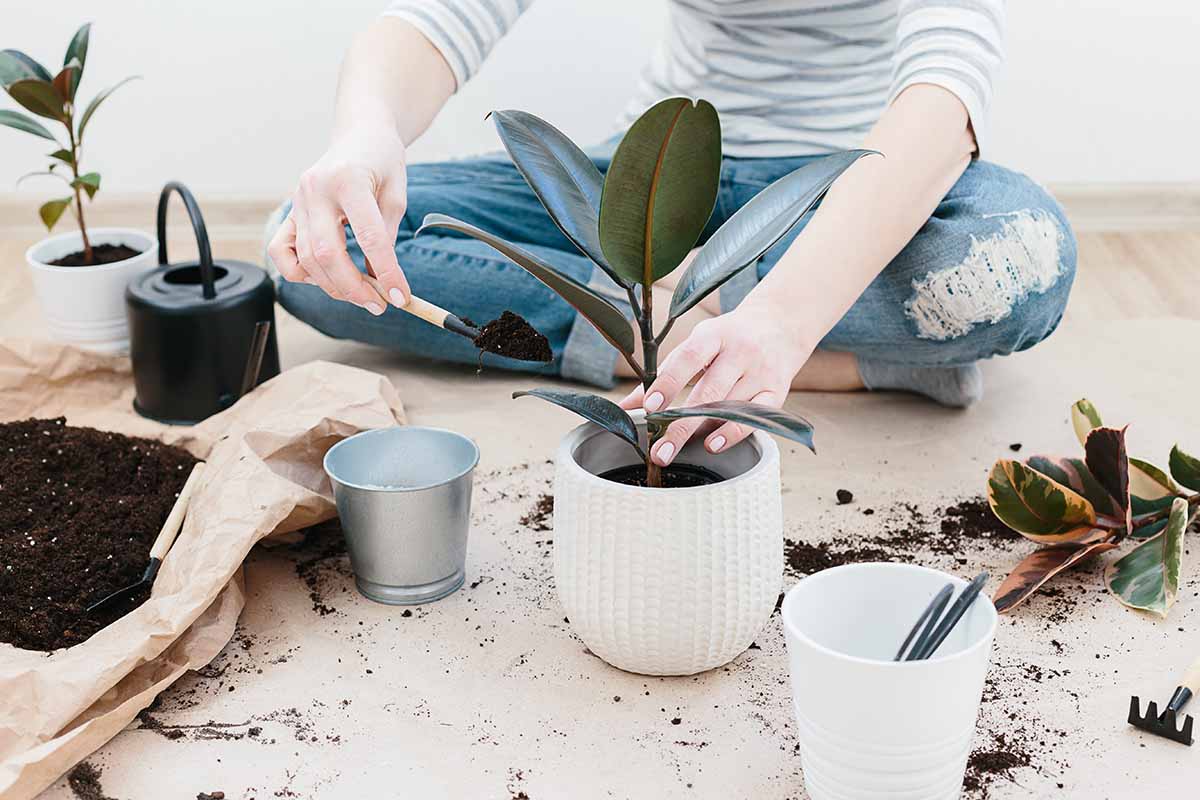
Hold the plant inside the new container so that it will be situated at the same depth as it was in the previous container.
Then, fill in around the roots with a water-retentive, airy potting mix. There are mixes out there made for aroids, and you can always nab one of those.
I prefer to use a product like FoxFarm’s Ocean Forest mix, available via Amazon, or De La Tank’s Houseplant Mix, which contains compost, coconut husks, worm castings, bat guano, and pumice to improve drainage.
You can pick up a one, eight, or 16-quart bag of De La Tank’s at Arbico Organics.
Once the roots are securely in place in the potting soil, water well. If the soil settles at all, add a bit more.
How to Grow Ficus
Because the Ficus genus encompasses such a wide range of plants, it’s a little difficult to sum up the care requirements for all types. When you commit to a specific species, be sure to read up on its needs.
Broadly speaking, those grown as houseplants need bright, indirect light or some direct morning light. They can often tolerate less light, but they certainly don’t prefer it.

Outdoors, most Ficus species need full to partial sunlight. Some will mature into huge trees, so they’ll grow large enough to reach the full sunlight whether you want them to or not.
Those that grow as epiphytes or small shrubs can usually thrive in lower light exposure, with some even tolerating full shade.
When it comes to water, they generally like consistently moist soil, but they won’t tolerate standing water around the roots.
If your plant is in a container, water it when the top quarter of the soil has dried out.
For outdoor specimens, allow the top few inches of soil to dry out between watering – in the absence of rain. Established trees won’t need any additional irrigation except in times of extreme drought.
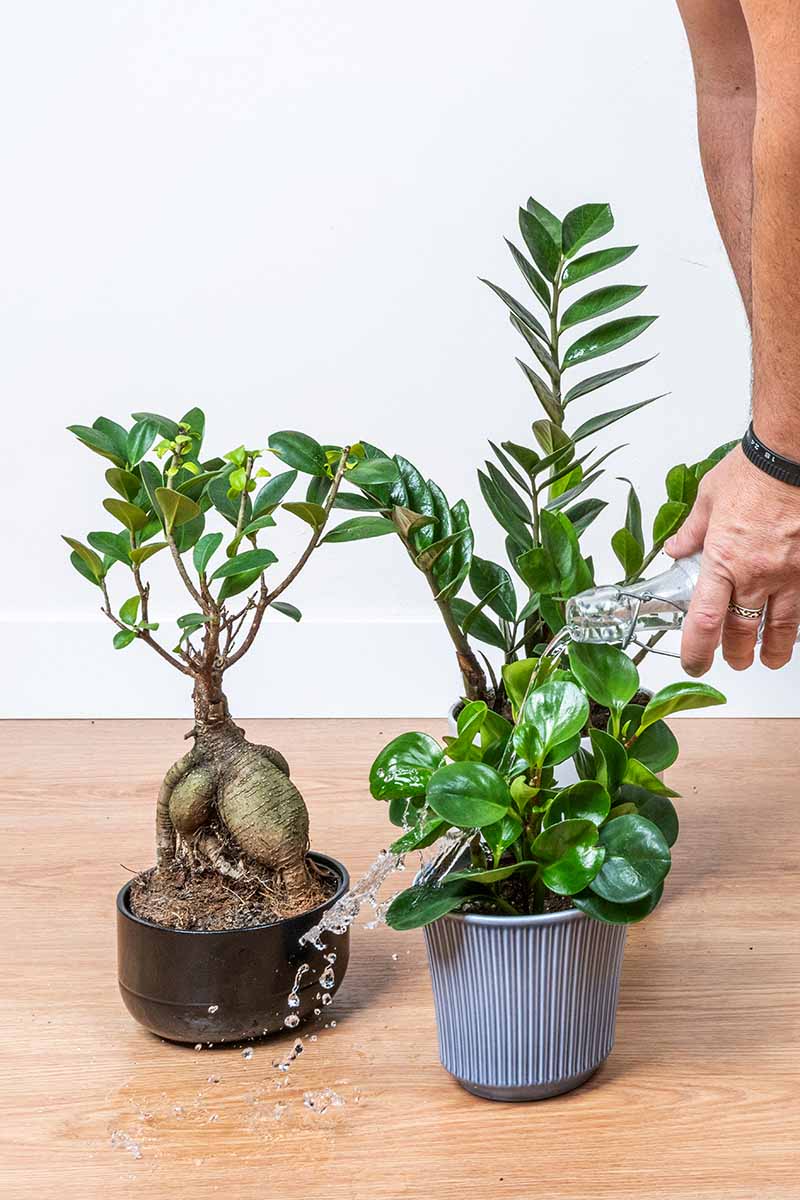
Most Ficus species come from humid regions. These aren’t plants that you’ll find chilling in the dry desert.
Misting isn’t really an effective way of increasing the humidity around your plant, so it’s best to purchase a humidifier or group houseplants together if your home is a bit dry. You can also keep your plant in the bathroom, where it’s usually nice and moist.
Try to aim for a relative humidity level of about 50 to 70 percent. Most species will survive in lower humidity, but they won’t thrive.

These plants also need warm temperatures – between 55 and 85°F is fine. Don’t keep your houseplant near a drafty window or exterior door if it gets really cold in your neck of the woods.
Outdoor plants typically thrive in warmer USDA Hardiness Zones, like 8 and above, but there are a few species that grow in more northern Zones.
Depending on the species, you should plan to feed indoor plants twice a year. They aren’t greedy, and overfeeding can result in yellow leaves and poor growth.
Either granular or liquid fertilizer is fine. I generally use a mild product that’s formulated for houseplants.
That way, I can use it for all my houseplants without having to worry that they’re not getting what they need. Feed once in the spring and once in late summer.
Arber makes an excellent indoor plant food with a 3-2-1 NPK ratio that’s perfect for encouraging lots of leafy growth.
Pick up a 16-ounce bottle at Arbico Organics.
If you’re growing your plants outside, give them an all-purpose food unless you’re cultivating common figs. In that case, use a fruit tree mix to support fruit production.
I like Down to Earth’s Fruit Tree fertilizer, which is available at Arbico Organics in five-, 15-, and 25-pound biodegradable boxes.
Down to Earth Fruit Tree Fertilizer
It has the right balance for fruit production and is derived from natural ingredients like fish bone meal, alfalfa meal, and kelp meal.
Climbing or creeping species can be allowed to trail or trained up a moss pole.
Growing Tips
- Most Ficus species need consistently moist soil.
- Provide bright, indirect light indoors and full to partial sun outdoors.
- Feed in early spring and late summer.
Pruning and Maintenance
As your plants thrive and grow, potted specimens will need a container upgrade every few years and once they reach the mature size, you’ll still need to replace the potting substrate regularly.
Over time, potting soils and other growing mediums tend to break down and become depleted of nutrients. They can also become hydrophobic, so the water just runs around rather than through it.
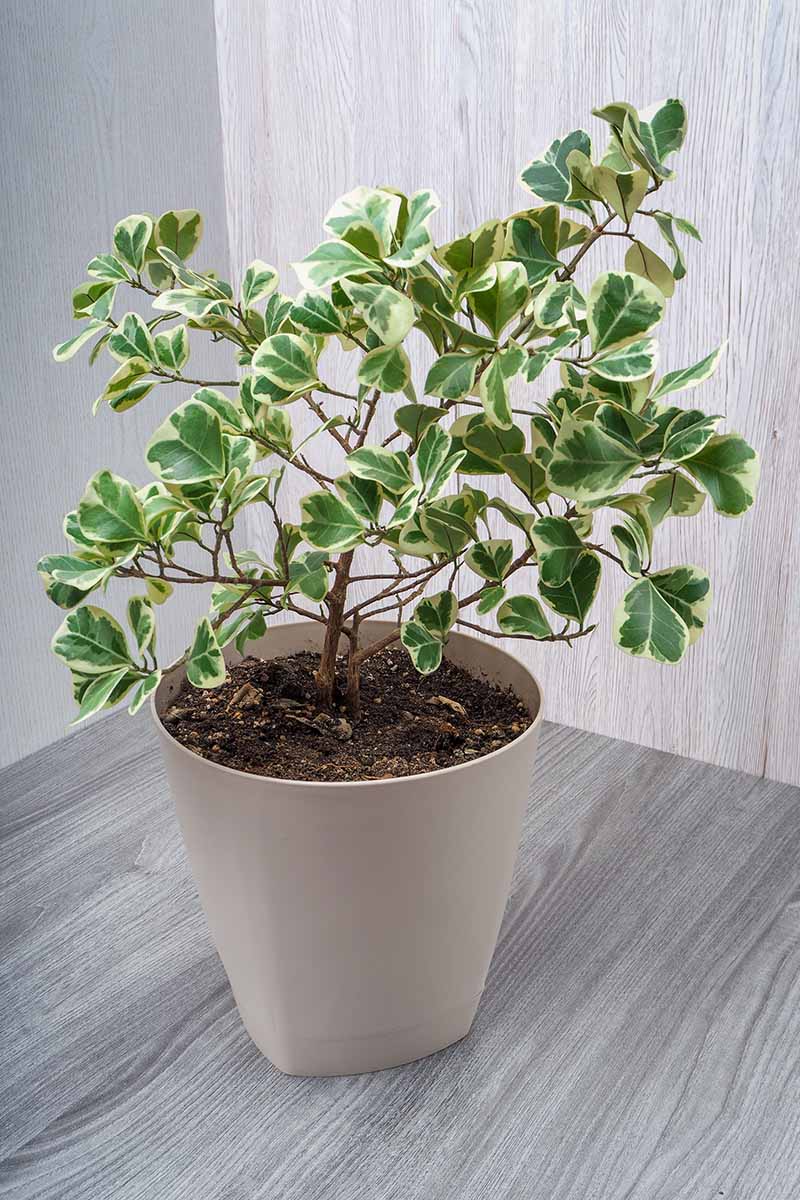
Most plants can be repotted in the spring or summer by removing the plant from its pot, knocking away the soil, and cutting off any dead or damaged roots.
Place the plant back in the same pot or in a container just one size up. Fill in around the roots with fresh potting soil and water well.
There is generally no need to prune these plants unless you want to change the shape or remove dead, diseased, deformed, or dying branches. That’s right, even the edible fig doesn’t need complicated pruning as most stone fruit species do.
There’s no need to remove aerial roots. They support the plant’s health, and they’re a good thing. You can tuck them into a moss pole if you’re using one, or just let them be.
Species with large leaves should be wiped regularly to remove any dust. An accumulation of dust can reduce photosynthesis and impact the health of the plant.
Ficus Species to Select
As I’ve mentioned, there are over 800 Ficus species, but only a dozen or so that we commonly grow as houseplants or ornamental garden specimens.
Banana Leaf
Sometimes called long-leaf figs, banana leaf figs (F. maclellandii) have long, drooping, leathery leaves.
Indoors, they grow to about six feet tall, but they can reach closer to 10 feet in the right conditions.
In their native China, India, and Southeast Asia, they reach up to 40 feet tall and produce pairs of round fruits.
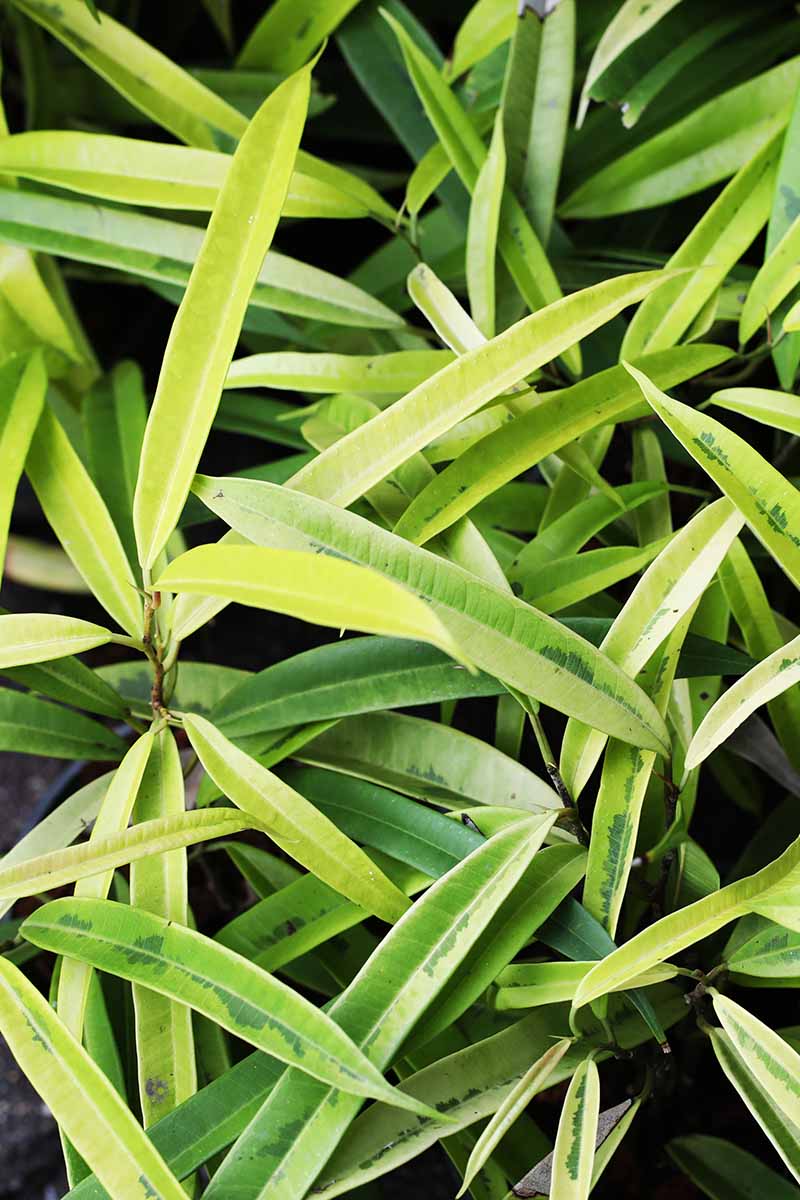
Like many other plants in this genus, they send out large aerial roots that anchor them into the ground.
There are beautiful cultivars with variegated foliage or with compact growth habits that lend themselves to indoor life.
‘Alii,’ the most common cultivar, is often sold with braided trunks.
It has a dense growth habit and tops out at about six feet tall indoors. Outdoors, it can grow in Zones 9 to 11.
Pick up your own ‘Alii’ in a three to four-foot height at Fast Growing Trees.
Learn more about caring for banana leaf fig plants.
Climbing
Climbing or trailing ficus (F. radicans syn. F. sagittata) is native to southeast Asia, where it uses its roots to climb up trees and other structures.
The heart- or arrow-shaped leaves are glossy, dark green, and slightly wrinkled.

It’s often confused with creeping ficus (F. pumila), and while they’re similar, they are different plants. The leaves of F. radicans are lanceolate compared to the cordate leaves of F. pumila.
Climbing figs can grow up to 30 feet long in the wild, but they generally stay much shorter in the home.
Most people opt to grow them in hanging baskets, but they’d be lovely growing up a moss pole, as well. If you live in Zones 10 to 12, you can grow them in a shady spot outdoors.
Common
Common figs (F. carica) must grow outdoors in Zones 8 to 10 or in a greenhouse if you want them to produce fruits.

You can also enjoy them indoors as houseplants. The dwarf cultivars work well indoors and will even produce fruit if you have a sunny spot in a south-facing window.
With or without the fruits, the large, lobed leaves with a cordate base add flair to the home.
For indoor fruits or just a manageable outdoor tree, ‘Petite Negra’ and ‘Fignomenal’ are both phenomenal options.
Both stay under about five feet tall with a bushy, dense growth habit. Find a ‘Fignomenal’ plant at Burpee.
Learn more about how to grow figs in our guide.
Creeping
Native to China, Japan, and Vietnam, creeping fig (F. pumila) has naturalized across parts of North America where temperatures reliably remain above freezing, though it can be cultivated in Zones 8 to 11.
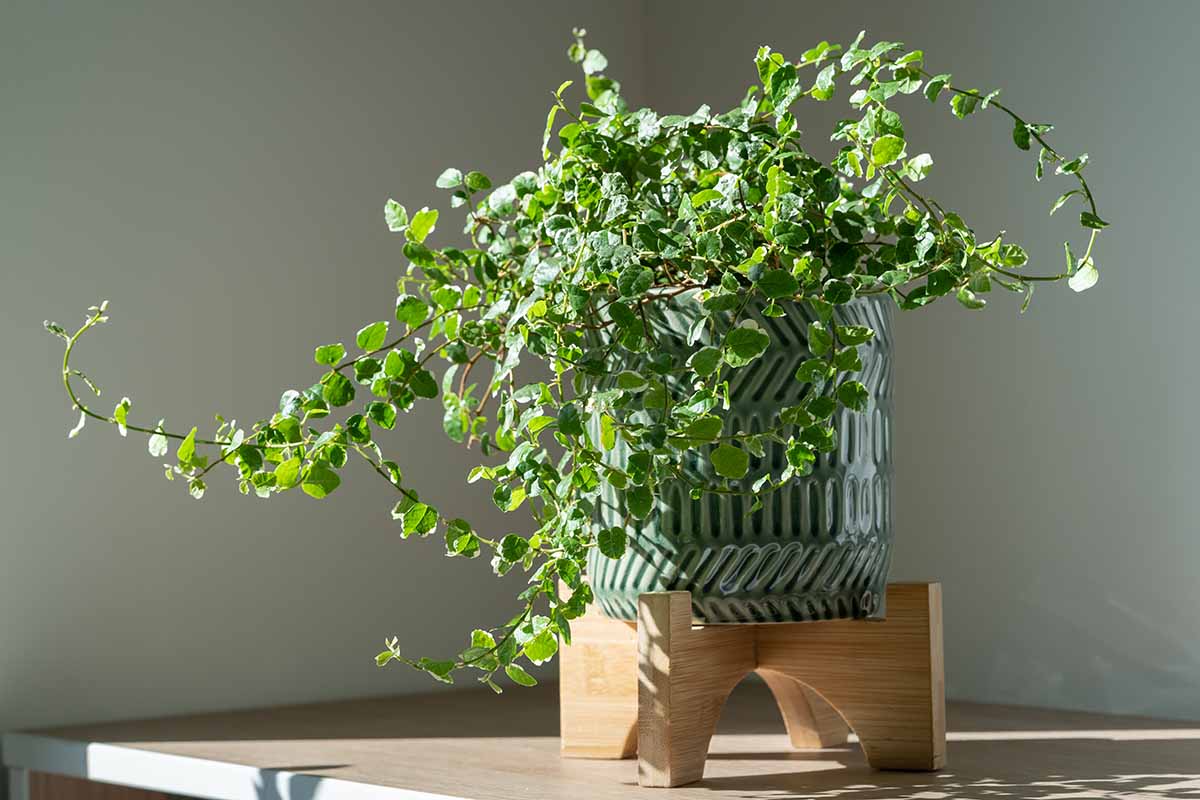
It climbs up trees, rocks, and other structures to about 12 feet in length, but stays much more contained indoors.
There are several notable cultivars of this species, like the petite ‘Minima,’ which has tiny half-inch leaves.
Fiddle-Leaf Fig
The Jurrasic-looking leaves of fiddle-leaf fig (F. lyrata) have earned it a place in all the most stylish homes and hotels. Outside, they make a dramatic statement reaching 50 feet tall or more in Zones 10 to 12.
Indoors, they’re much more petite, though no less dramatic. They typically top out at about 15 feet unless you have high ceilings for them to stretch up into.

There are also dwarf cultivars that remain naturally nice and small, so you aren’t having to chop off their tops as they reach the ceiling.
Cute little ‘Bambino’ only grows to about five feet tall with correspondingly smaller leaves than the species plant.
It’s available at Fast Growing Trees in a two- to three-foot height.
Or go with the classic species in a three- to four- or four- to five-foot height, also from Fast Growing Trees.
Hailing from the lowland rainforests of western Africa, both adapt well to indoor life, so long as you know what these plants prefer.
If you need some tips, read our guide to growing fiddle-leaf figs.
Formosan Creeping
The first time I ever saw a Formosan creeping fig (F. vaccinioides), it had been trained up a frame to create a topiary.
I was intrigued by the glossy oval leaves and vining growth habit. When I found out it was in the Ficus genus, I was thrilled because I’ve had such good luck growing so many of these plants.
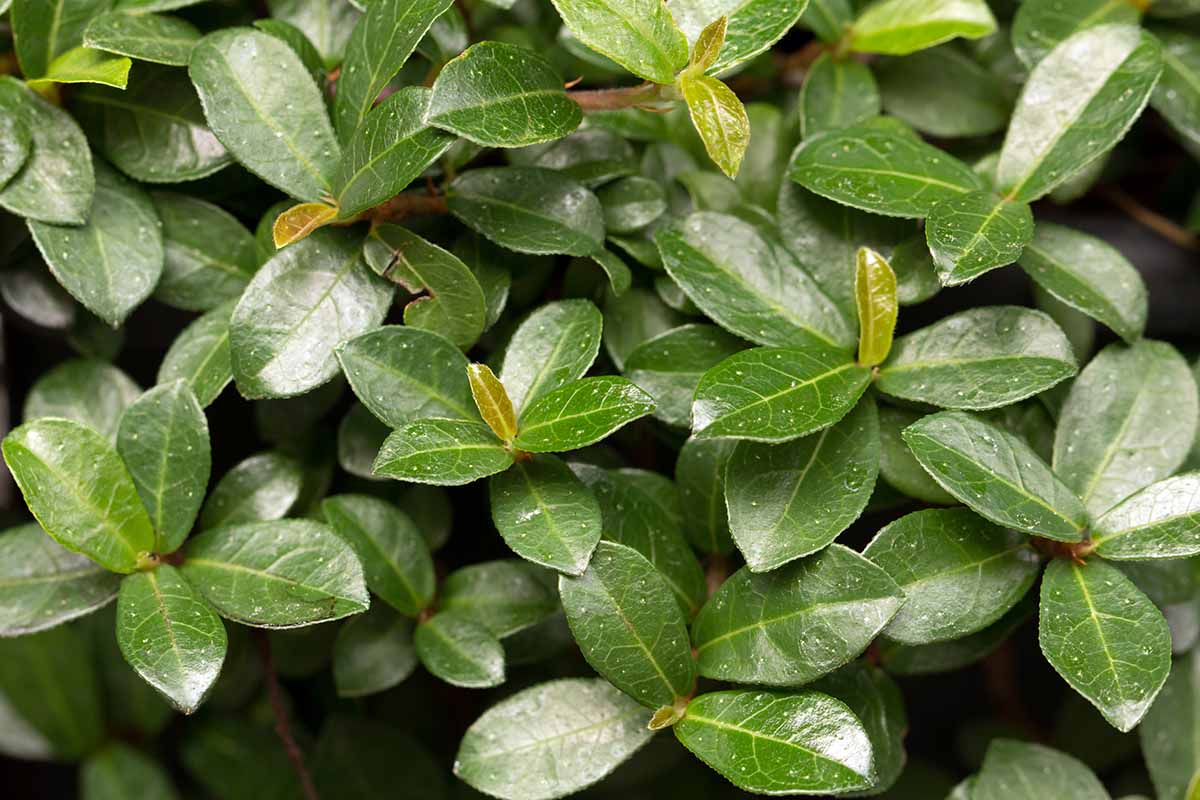
It even grows teeny tiny fruits! It stands apart from F. pumila because it has slightly larger leaves but otherwise looks similar.
Whether you train it up a pole or a frame or just let it trail down the sides of the pot, it’s a looker. Or grow it outdoors if you’re in Zones 9 to 11.
Ginseng
Indigenous to Southeast Asia and wildly popular in homes across the globe is the beautiful ginseng fig (F. microcarpa).
It’s extremely common as a bonsai because it can be grown indoors year-round, unlike many other common bonsai species.
You’ll often see them with disproportionately large or braided trunks, making them a fun architectural element.
For example, check out this one from Nature Hills in a white decorative pot.
Indoors, these plants grow to about seven feet tall. Outdoors, they can reach 50 feet or more in Zones 9 to 11.
Of course, if you want to enjoy them as bonsai, you can keep them much smaller.
Learn more about growing ginseng figs in our guide.
Long-Leaf
Native across Southeast Asia, long-leaf or narrow-leaf fig (F. binnendijkii) climbs nearly 100 feet tall up nearby trees and eventually strangles them.
It needs warm climates to thrive and can only be grown outdoors in Zones 10 to 11. Indoors, it’s usually trained as a small tree under ten feet tall that resembles a weeping willow.

Don’t confuse it with the other long-leaved ficus species, F. maclellandii.
Banana leaf ficus has prominent basal veins, but they are similar otherwise.
Rubber Plant
F. elastica can grow really large, up to nearly 200 feet tall, in its native south and Southeast Asia. It’s probably best known as a dramatic houseplant that can reach up to ten feet tall.
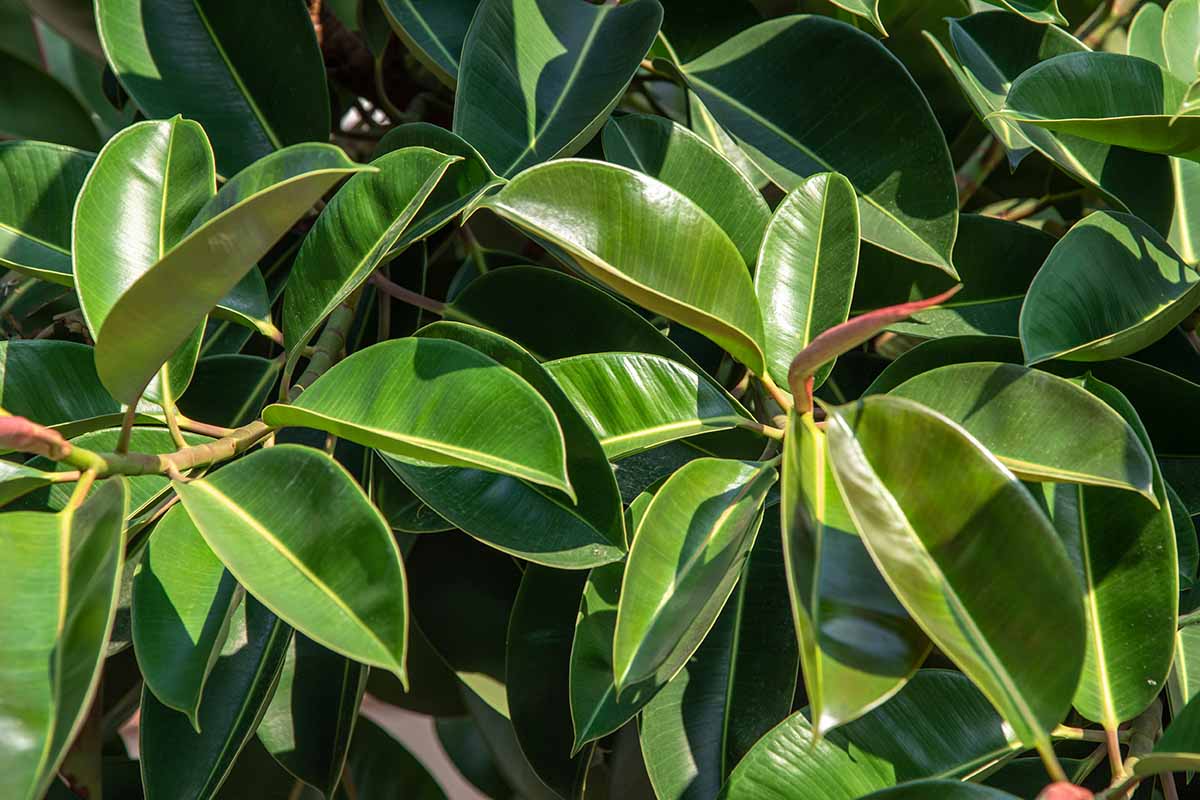
The leaves are what make this species stand out. They are large, succulent, and glossy, growing up to a foot long and four inches wide.
They can be either solid green with a burgundy underside, or variegated in a combination of burgundy, pink, yellow, cream, or white.
Snag the species from Fast Growing Trees in a six-inch or three-gallon pot.
Or pick up the show-stopping ‘Tineke’ with its pink, olive green, dark green, and creamy yellow leaves.
It’s also available at Fast Growing Trees in three-gallon starter pot or your choice of decorative pots.
Then, read our guide to growing rubber trees to learn how to keep your plant happy.
Triangle Fig
If you guessed that F. triangularis has triangular leaves, you nailed it.
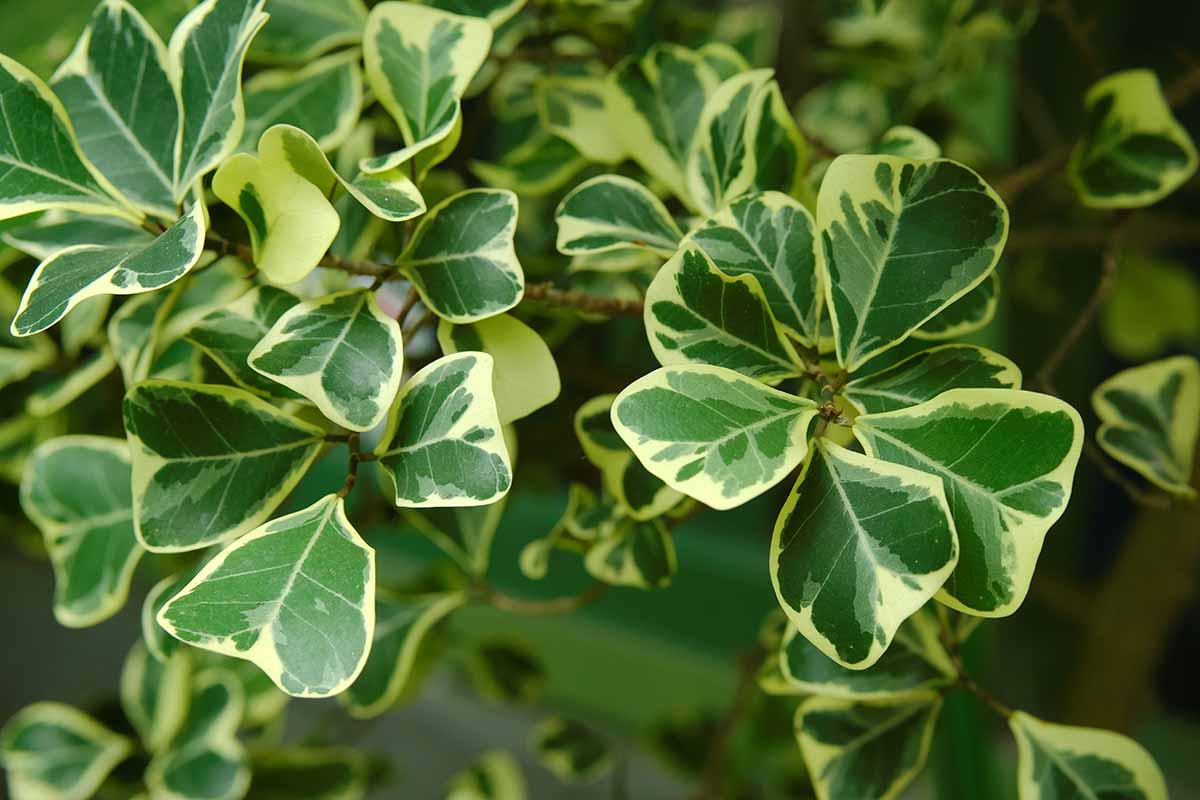
The succulent leaves grow as inverted triangles with soft, curved edges, earning it the nickname sweetheart tree.
This species is native to South Africa, where it grows about 15 feet tall in cultivation. Indoors, it can grow up to eight feet tall but usually stays about half that.
F. triangularis prefers warmer temperatures than many others on this list and if you intend to grow it outdoors, you’ll need to live in Zones 12 or 13.
Ficus triangularis ‘Variegata’
You can find both solid and variegated versions, as with ‘Variegata,’ which is available at Fast Growing Trees in one- or three-gallon pots.
Weeping
A weeping fig (F. benjamina) is the perfect choice if you want to bring the look of a landscaping tree to your interior.
It has that classic tree shape with twisting ovate leaves in a glossy green hue, or you can find it with creamy variegation, as well.
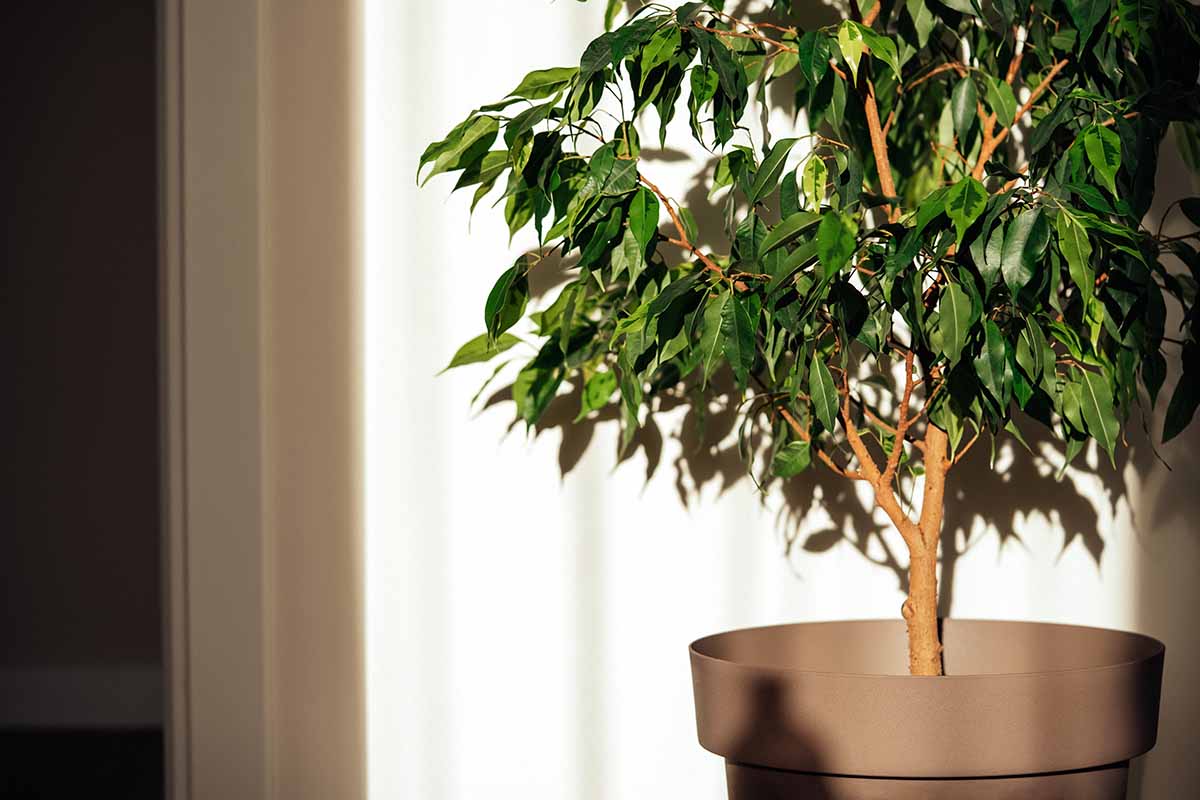
Outdoors, these trees climb up other plants and send down aerial roots that make it look like it has multiple trunks.
They can reach over 50 feet tall in their native Asian and Australian home. In the US, they grow in Zones 9 to 12.
As indoor plants, you will find them available as braided multiple stems or as single stem specimens. They will typically grow up to about 12 feet tall.
Visit Fast Growing Trees for a braided stem option in two- to three- or three- to four-foot height.
Once you have your new plant, read our guide to learn more about caring for weeping figs.
Managing Pests and Disease
Some species are much more resistant to problems than others. Ginseng fig, for instance, is pretty unbothered by pests or disease in general.
Weeping ficus is known for dropping leaves if you even look at it wrong, and this species can be extremely sensitive to overwatering. Root diseases are not uncommon.
In general, species grown as houseplants might encounter aphids, mealybugs, scale, or spider mites.

All are prone to root rot, which is often caused by Rhizoctonia solani and Fusarium oxysporum. These pathogens thrive where there is a lot of moisture, so it’s important to avoid overwatering.
Root rot will cause the leaves to turn yellow or brown and fall from the plant.
If you notice this happening, the best thing to do is to remove the plant from its container and examine the roots. If you see rot or mushy, black roots, trim all the symptomatic roots away.
Then, treat the roots with a biofungicide like Mycostop.
This product is made using sphagnum peat moss which contains the beneficial bacterium Streptomyces Strain K61.
I use this product anytime my plants are struggling with root rot and have always had good results.
Bring home five or 25 grams from Arbico Organics and follow the manufacturer’s directions for application.
Best Uses for Ficus Species
With so many different growth habits, shapes, sizes, leaf variations, and fruit options, there are a lot of ways to enjoy the plants in the Ficus genus.
Many species lend themselves to bonsai and houseplant life. You can grow them as trailing plants, trained up moss poles or topiary frames, or as free-standing indoor trees.
Outdoors, they can be ground covers, trained climb up supports, or grown as shrubs or trees.
Some make excellent shade tree options, others are perfect hedges. Some species can even be trained into living bridges and furniture – Seriously!
In northeastern India, the Khasi people train rubber figs into living bridges.
Quick Reference Growing Guide
| Plant Type: | Woody vines, shrubs, and trees | Foliage Color: | Green, yellow, white, variegated |
| Native to: | Africa, Asia, Mediterranean, Oceania, South America | Tolerance: | Some drought |
| Hardiness (USDA Zone): | 6-12, depending on species | Maintenance: | Low to moderate |
| Bloom Time/Season: | Fruit in spring and summer | Soil Type: | Loose, rich |
| Exposure: | Full shade to full sun, depending on species | Soil pH: | 6.0-8.0, depending on species |
| Time to Maturity: | Varies by species | Soil Drainage: | Well-draining |
| Spacing: | Varies by species | Attracts: | Ficus wasps (outdoors) |
| Planting Depth: | Same depth as growing container | Uses: | Bonsai, trailing, climbing, houseplants, shrubs, ground cover, landscape trees |
| Height: | Up to 200 feet depending on species | Order: | Rosales |
| Spread: | Up to 200 feet depending on species | Family: | Moraceae |
| Water Needs: | Moderate | Genus: | Ficus |
| Common Pests and Disease: | Aphids, mealybugs, scale, spider mites; Root rot | Species: | Benjamina, binnendijkii, carica, elastica, lyrata, maclellandii, microcarpa, pumila, radicans, triangularis, vaccinioides |
There’s Lots to Love About the Fabulous Ficus Genus
The Ficus genus comprises some of the most beloved houseplants as well as the trees that grow our coveted fig fruits. They have stunning leaves, fascinating trunks, and unusual flowers. There’s a lot to love about these plants.

Which Ficus species are you interested in? How do you plan to grow it? Share your plans in the comments section below.
Now that you’ve mastered the genus, you might want to learn more about growing Ficus plants. If so, we have the guides to help you along. Here are just a few:
